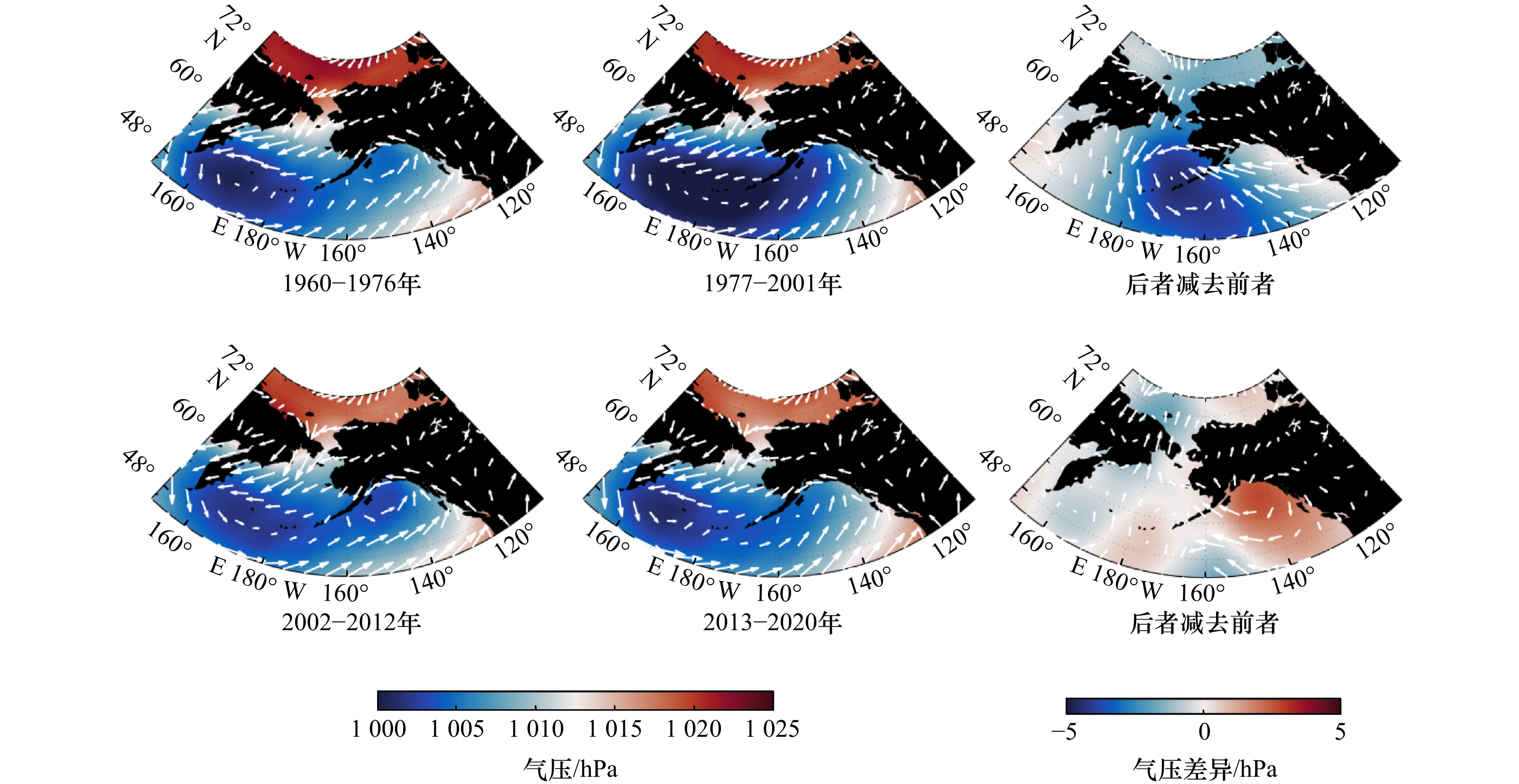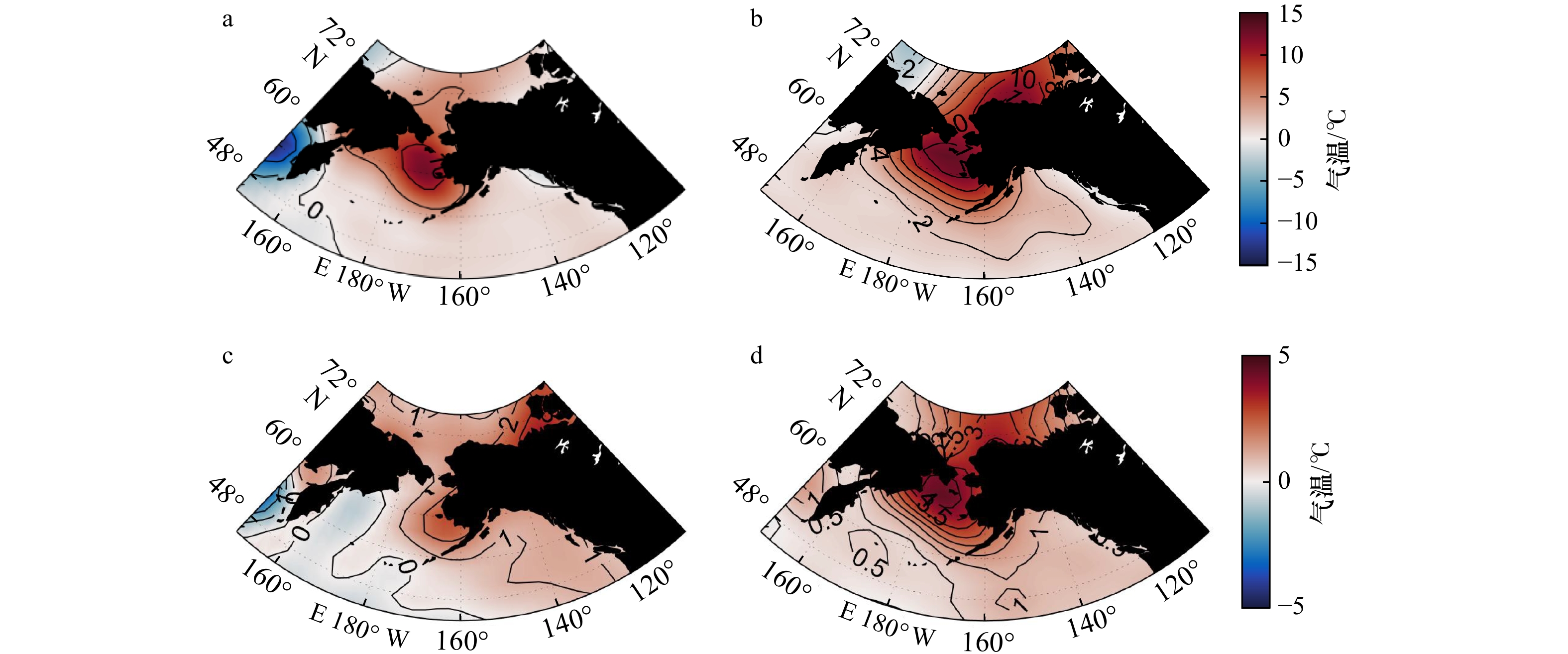| [1] |
Overland J E, Stabeno P J. Is the climate of the Bering Sea warming and affecting the ecosystem?[J]. EOS, Transactions American Geophysical Union, 2004, 85(33): 309−312.
|
| [2] |
Zhang Jinlun, Woodgate R, Moritz R. Sea ice response to atmospheric and oceanic forcing in the Bering Sea[J]. Journal of Physical Oceanography, 2010, 40(8): 1729−1747. doi: 10.1175/2010JPO4323.1
|
| [3] |
Stabeno P J, Hunt G L. Overview of the inner front and Southeast Bering Sea carrying capacity programs[J]. Deep-Sea Research Part II: Topical Studies in Oceanography, 2002, 49(26): 6157−6168. doi: 10.1016/S0967-0645(02)00339-9
|
| [4] |
Stabeno P J, Bond N A, Salo S A. On the recent warming of the southeastern Bering Sea Shelf[J]. Deep-Sea Research Part II: Topical Studies in Oceanography, 2007, 54(23/26): 2599−2618.
|
| [5] |
Bliss A C, Steele M, Peng Ge, et al. Regional variability of Arctic sea ice seasonal change climate indicators from a passive microwave climate data record[J]. Environmental Research Letters, 2019, 14(4): 045003. doi: 10.1088/1748-9326/aafb84
|
| [6] |
Wang Jia, Hu Haoguo, Mizobata K, et al. Seasonal variations of sea ice and ocean circulation in the Bering Sea: A model-data fusion study[J]. Journal of Geophysical Research: Oceans, 2009, 114(C2): C02011.
|
| [7] |
Stabeno P J, Bond N A, Kachel N B, et al. On the temporal variability of the physical environment over the south-eastern Bering Sea[J]. Fisheries Oceanography, 2001, 10(1): 81−98. doi: 10.1046/j.1365-2419.2001.00157.x
|
| [8] |
Bluhm B A, Gradinger R. Regional variability in food availability for Arctic marine mammals[J]. Ecological Applications, 2008, 18(sp2): S77−S96. doi: 10.1890/06-0562.1
|
| [9] |
Ding Yihui, Krishnamurti T N. Heat budget of the Siberian high and the winter monsoon[J]. Monthly Weather Review, 1987, 115(10): 2428−2449. doi: 10.1175/1520-0493(1987)115<2428:HBOTSH>2.0.CO;2
|
| [10] |
Ding Yihui. Build-up, air mass transformation and propagation of Siberian high and its relations to cold surge in East Asia[J]. Meteorology and Atmospheric Physics, 1990, 44(1): 281−292.
|
| [11] |
Zhang Yi, Sperber K R, Boyle J S. Climatology and interannual variation of the East Asian winter monsoon: Results from the 1979–95 NCEP/NCAR reanalysis[J]. Monthly Weather Review, 1997, 125(10): 2605−2619. doi: 10.1175/1520-0493(1997)125<2605:CAIVOT>2.0.CO;2
|
| [12] |
Compo G P, Kiladis G N, Webster P J. The horizontal and vertical structure of East Asian winter monsoon pressure surges[J]. Quarterly Journal of the Royal Meteorological Society, 1999, 125(553): 29−54. doi: 10.1002/qj.49712555304
|
| [13] |
孙建奇, 王会军, 袁薇. 2007年3月中国东部北方地区一次强灾害性暴风雪事件的成因初探[J]. 气象学报, 2009, 67(3): 469−477. doi: 10.11676/qxxb2009.047Sun Jianqi, Wang Huijun, Yuan Wei. A preliminary investigation on causes of the catastrophic snowstorm in March 2007 in the northeastern parts of China[J]. Acta Meteorologica Sinica, 2009, 67(3): 469−477. doi: 10.11676/qxxb2009.047
|
| [14] |
Wang Huijun, Yu Entao, Yang Song. An exceptionally heavy snowfall in Northeast China: Large-scale circulation anomalies and hindcast of the NCAR WRF model[J]. Meteorology and Atmospheric Physics, 2011, 113(1): 11−25.
|
| [15] |
Li Fei, Wang Huijun. Relationship between Bering Sea ice cover and East Asian winter monsoon year-to-year variations[J]. Advances in Atmospheric Sciences, 2013, 30(1): 48−56. doi: 10.1007/s00376-012-2071-2
|
| [16] |
Mantua N J, Hare S R, Zhang Yuan, et al. A Pacific interdecadal climate oscillation with impacts on salmon production[J]. Bulletin of the American Meteorological Society, 1997, 78(6): 1069−1080. doi: 10.1175/1520-0477(1997)078<1069:APICOW>2.0.CO;2
|
| [17] |
Trenberth K E, Hurrell J W. Decadal atmosphere-ocean variations in the Pacific[J]. Climate Dynamics, 1994, 9(6): 303−319. doi: 10.1007/BF00204745
|
| [18] |
Thompson D W J, Wallace J M. The Arctic Oscillation signature in the wintertime geopotential height and temperature fields[J]. Geophysical Research Letters, 1998, 25(9): 1297−1300. doi: 10.1029/98GL00950
|
| [19] |
Overland J E, Adams J M, Bond N A. Decadal variability of the Aleutian low and its relation to high-latitude circulation[J]. Journal of Climate, 1999, 12(5): 1542−1548. doi: 10.1175/1520-0442(1999)012<1542:DVOTAL>2.0.CO;2
|
| [20] |
Stabeno P J, Overland J E. Bering Sea shifts toward an earlier spring transition[J]. EOS, Transactions American Geophysical Union, 2001, 82(29): 317−321.
|
| [21] |
Niebauer H J, Day R H. Causes of interannual variability in the sea ice cover of the eastern Bering Sea[J]. GeoJournal, 1989, 18(1): 45−59. doi: 10.1007/BF00722385
|
| [22] |
Overland J E, Bond N A, Adams J M. North Pacific atmospheric and SST anomalies in 1997: links to ENSO?[J]. Fisheries Oceanography, 2001, 10(1): 69−80. doi: 10.1046/j.1365-2419.2001.00154.x
|
| [23] |
Niebauer H J. Sea ice and temperature variability in the eastern Bering Sea and the relation to atmospheric fluctuations[J]. Journal of Geophysical Research: Oceans, 1980, 85(C12): 7507−7515. doi: 10.1029/JC085iC12p07507
|
| [24] |
Overland J E, Pease C H. Cyclone climatology of the Bering Sea and its relation to sea ice extent[J]. Monthly Weather Review, 1982, 110(1): 5−13. doi: 10.1175/1520-0493(1982)110<0005:CCOTBS>2.0.CO;2
|
| [25] |
Sasaki Y N, Minobe S. Seasonally dependent interannual variability of sea ice in the Bering Sea and its relation to atmospheric fluctuations[J]. Journal of Geophysical Research: Oceans, 2005, 110(C5): C05011.
|
| [26] |
Niebauer H J. Variability in Bering Sea ice cover as affected by a regime shift in the North Pacific in the period 1947–1996[J]. Journal of Geophysical Research: Oceans, 1998, 103(C12): 27717−27737. doi: 10.1029/98JC02499
|
| [27] |
Rodionov S N, Overland J E, Bond N A. The Aleutian low and winter climatic conditions in the Bering Sea. Part I: Classification[J]. Journal of Climate, 2005, 18(1): 160−177. doi: 10.1175/JCLI3253.1
|
| [28] |
胡宪敏, 苏洁, 赵进平, 等. 白令海楚科奇海的海冰范围变化特征[J]. 冰川冻土, 2007, 29(1): 53−60.Hu Xianmin, Su Jie, Zhao Jinping, et al. Variation Characteristics of the Sea Ice Extent in Bering-Chukchi Seas[J]. Journal of Glaciology and Geocryology, 2007, 29(1): 53−60.
|
| [29] |
Frey K E, Moore G W K, Cooper L W, et al. Divergent patterns of recent sea ice cover across the Bering, Chukchi, and Beaufort seas of the Pacific Arctic region[J]. Progress in Oceanography, 2015, 136: 32−49. doi: 10.1016/j.pocean.2015.05.009
|
| [30] |
Rayner N A, Parker D E, Horton E B, et al. Global analyses of sea surface temperature, sea ice, and night marine air temperature since the late nineteenth century[J]. Journal of Geophysical Research: Atmospheres, 108(D14): 4407.
|
| [31] |
Cai Qiongqiong, Beletsky D, Wang Jia, et al. Interannual and decadal variability of arctic summer sea ice associated with atmospheric teleconnection patterns during 1850–2017[J]. Journal of Climate, 2021, 34(24): 9931−9955.
|
| [32] |
Meier W N, Fetterer F, Windnagel A K, et al. NOAA/NSIDC climate data record of passive microwave sea ice concentration, Version 4[EB/OL]. (2021–05–31) [2022–01–26]. https://nsidc.org/data/G02202/versions/4.
|
| [33] |
Cavalieri D J, Gloersen P, Campbell W J. Determination of sea ice parameters with the NIMBUS 7 SMMR[J]. Journal of Geophysical Research: Atmospheres, 1984, 89(D4): 5355−5369. doi: 10.1029/JD089iD04p05355
|
| [34] |
Comiso J C. Characteristics of arctic winter sea ice from satellite multispectral microwave observations[J]. Journal of Geophysical Research: Atmospheres, 1986, 91(C1): 975−994. doi: 10.1029/JC091iC01p00975
|
| [35] |
Kalnay E, Kanamitsu M, Kistler R, et al. The NCEP/NCAR 40-year reanalysis project[J]. Bulletin of the American Meteorological Society, 1996, 77(3): 437−472. doi: 10.1175/1520-0477(1996)077<0437:TNYRP>2.0.CO;2
|
| [36] |
Parkinson C L, Cavalieri D J, Gloersen P, et al. Arctic sea ice extents, areas, and trends, 1978–1996[J]. Journal of Geophysical Research: Oceans, 1999, 104(C9): 20837−20856. doi: 10.1029/1999JC900082
|
| [37] |
Papineau J M. Wintertime temperature anomalies in Alaska correlated with ENSO and PDO[J]. International Journal of Climatology, 2001, 21(13): 1577−1592. doi: 10.1002/joc.686
|
| [38] |
Hartmann B, Wendler G. The significance of the 1976 Pacific climate shift in the climatology of Alaska[J]. Journal of Climate, 2005, 18(22): 4824−4839. doi: 10.1175/JCLI3532.1
|
| [39] |
Wendler G, Shulski M. A century of climate change for Fairbanks, Alaska[J]. Arctic, 2009, 62(3): 295−300.
|
| [40] |
Rodionov S N, Bond N A, Overland J E. The Aleutian low, storm tracks, and winter climate variability in the Bering Sea[J]. Deep-Sea Research Part II: Topical Studies in Oceanography, 2007, 54(23/26): 2560−2577.
|
| [41] |
Wendler G, Chen L, Moore B. Recent sea ice increase and temperature decrease in the Bering Sea area, Alaska[J]. Theoretical and Applied Climatology, 2014, 117(3): 393−398.
|
| [42] |
Wendler G, Chen L, Moore B. The first decade of the new century: a cooling trend for most of Alaska[J]. The Open Atmospheric Science Journal, 2012, 6(1): 111−116. doi: 10.2174/1874282301206010111
|
| [43] |
Stabeno P J, Bell S W. Extreme conditions in the Bering Sea (2017–2018): record-breaking low sea-ice extent[J]. Geophysical Research Letters, 2019, 46(15): 8952−8959. doi: 10.1029/2019GL083816
|
| [44] |
Lindsay R W, Zhang J. The thinning of Arctic sea ice, 1988–2003: Have we passed a tipping point?[J]. Journal of Climate, 2005, 18(22): 4879−4894. doi: 10.1175/JCLI3587.1
|
| [45] |
Kikuchi G, Abe H, Hirawake T, et al. Distinctive spring phytoplankton bloom in the Bering Strait in 2018: A year of historically minimum sea ice extent[J]. Deep-Sea Research Part II: Topical Studies in Oceanography, 2020, 181–182: 104905. doi: 10.1016/j.dsr2.2020.104905
|
| [46] |
IARC. In the coastal communities near the Bering Strait, a winter unlike the rest[EB/OL]. (2018–04–16) [2022–01–26]. https://www.climate.gov/news-features/features/coastal-communities-near-bering-strait-winter-unlike-rest.
|





 下载:
下载:










